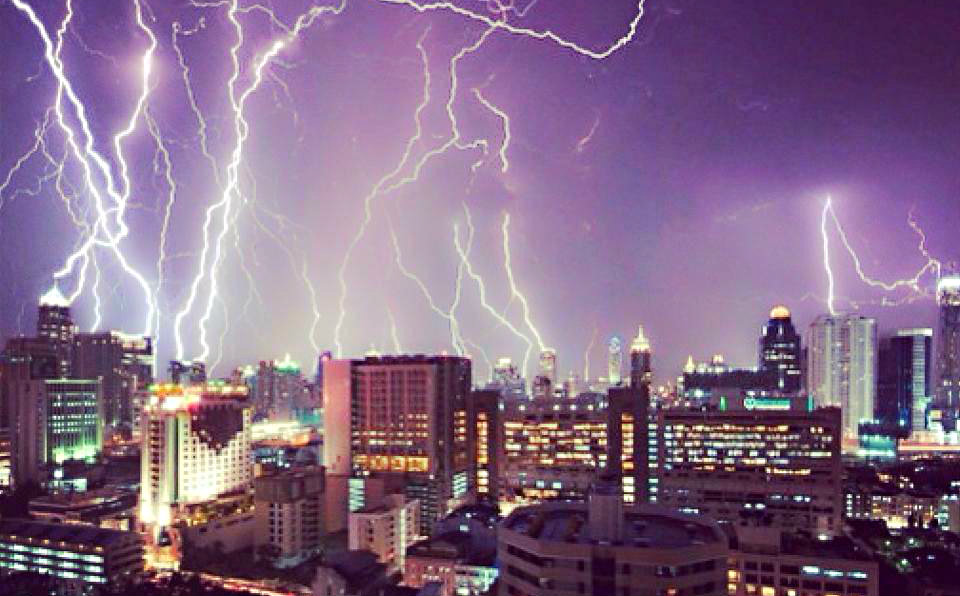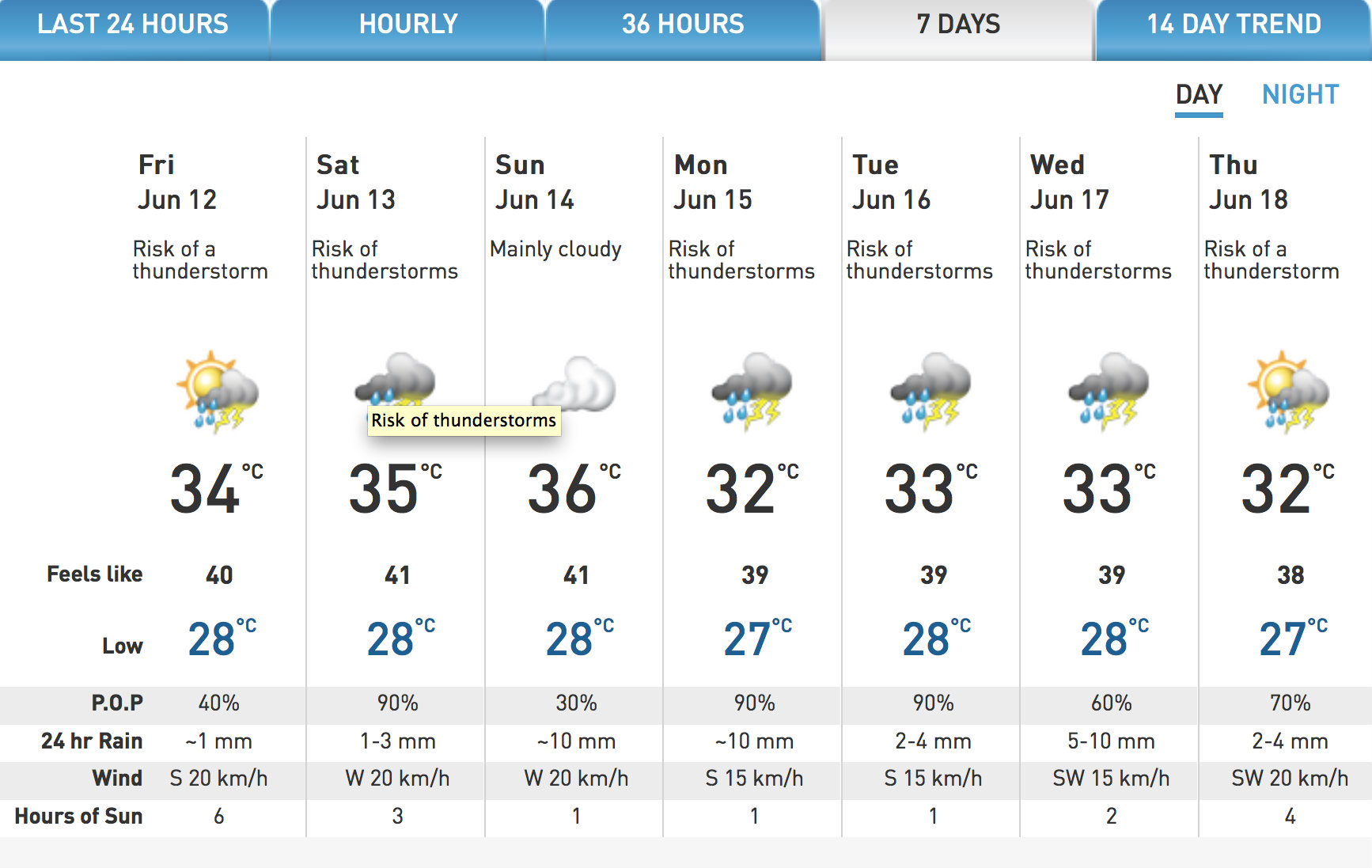This week, Bangkok experienced a wave of lightning, and torrential overnight rain left the city flooded. The monsoon season in Thailand has begun, and looking at the weather forecast more lightning will strike the city the next couple of days.
“City planners, meteorologists and citizens who live in or near large urban areas should be aware of the increased risk. These storms can produce dangerous weather hazards, including lightning, hail, strong winds and flash floods, often with little or no warning.”
Said Alex Haberlie to Phys Org earlier this year. He is a Northern Illinois University Ph.D. student in geography and lead author of a recent study published in the Quarterly Journal of the Royal Meteorological Society.

The 17-year study (1997–2013) shows that some big cities, particularly those located in hot and humid environments, actually birth more thunderstorms than surrounding rural areas.
The researchers of the study used an automated technique and radar data to pinpoint the locations of thunderstorm initiations, or births, over 17 years in a southeast U.S. region that included Atlanta.
“Our research demonstrates that urbanization has led to more thunderstorm initiation events in Atlanta than would have occurred over natural vegetation,” Alex Haberlie said. Read about the study in Phys Org.
Christ lost a finger
Last year, heavy storms hit Rio de Janeiro and resulted in great damage of the Cristo Redentor (Christ the Redeemer) statue, who was struck by lightning on the third finger of the right arm.
According to the Atmospheric Electricity Group INPE the incidence of lightning in Rio de Janeiro has increased the past few years – and as a result of urbanization.
“As the city becomes more urbanized, it creates an island of heat, because the vegetation is replaced by asphalt and homes. The increase in the number of cars is also a factor, because it generates more pollution, which contributes to the formation of lightning,” Coordinator for the group said to The Rio Times last year.
Flashes worldwide
Globally, there are about 40 to 50 flashes of lightning every second or nearly 1.4 billion flashes per year.
Between 1998 and 2013, NASA’s Tropical Rainfall Measuring Mission and OrbView-1/Microlab satellites gathered data on the number and location of lightning flashes worldwide. As it turns out, lightning tends to happen most often in areas closest to the equator, and more often over land than over the ocean.
According to NASA satellite data more intense activity of lightning happens in Argentina and South Africa. The greatest amount of lightning strikes are near the Catatumbo River in Venezuela (where there are 40,000 strikes every night most of the year), and a mountain town called Kifuka in the Democratic Republic of the Congo.
In Asia, Indonesia is listed as one of the six places in the world with most unusual levels of lightning activity.
Bangkok weather forecast

For more information about lightning and lightning mapping, visit NASA’s lightning and Atmospheric Electricity Research Center.

